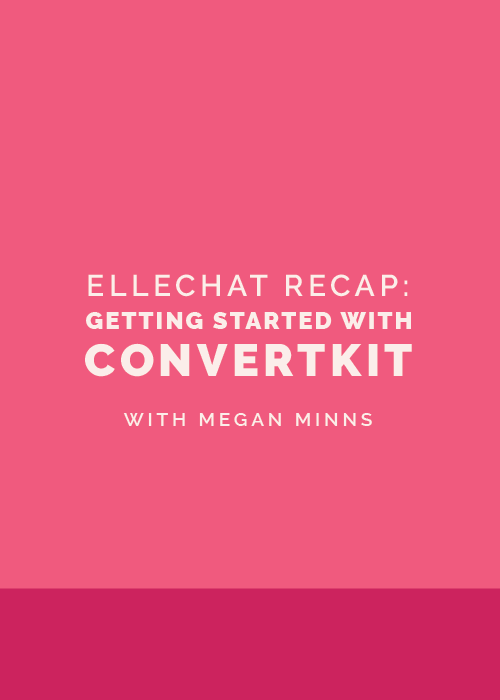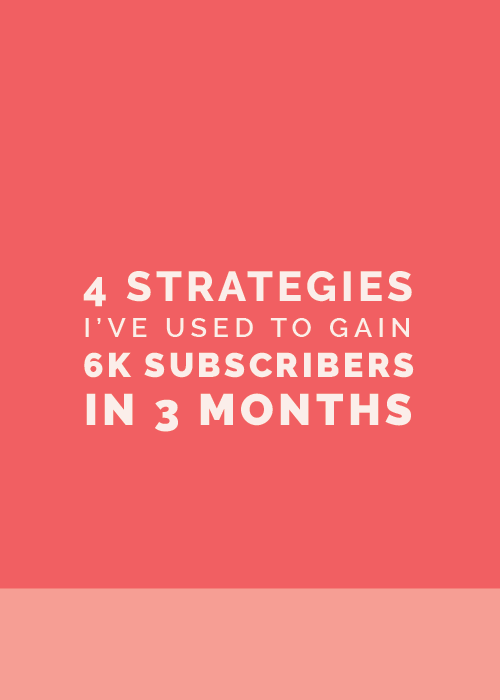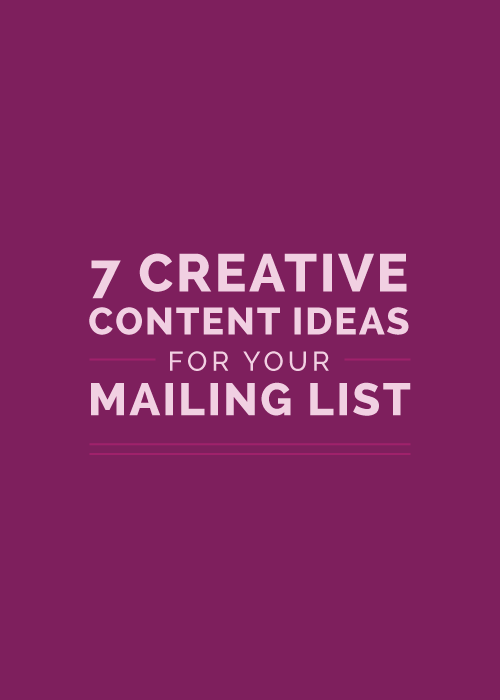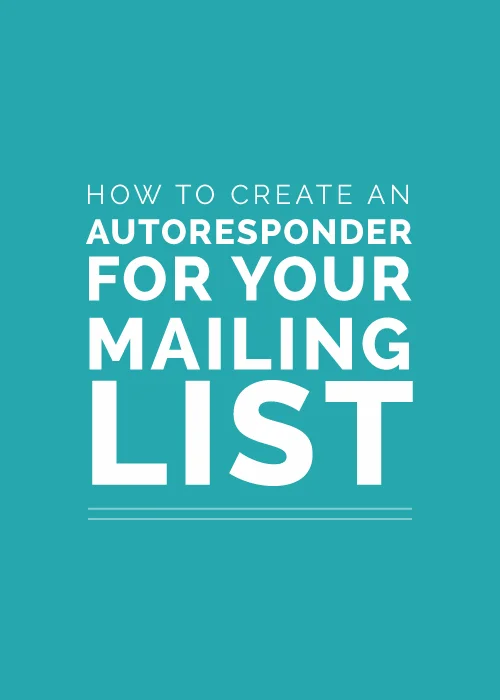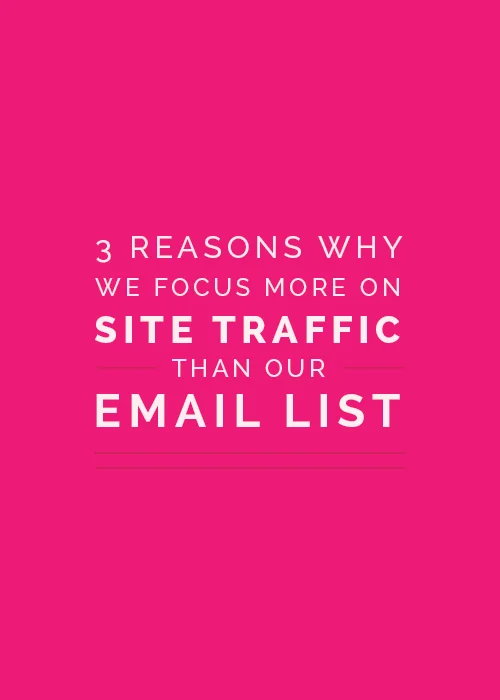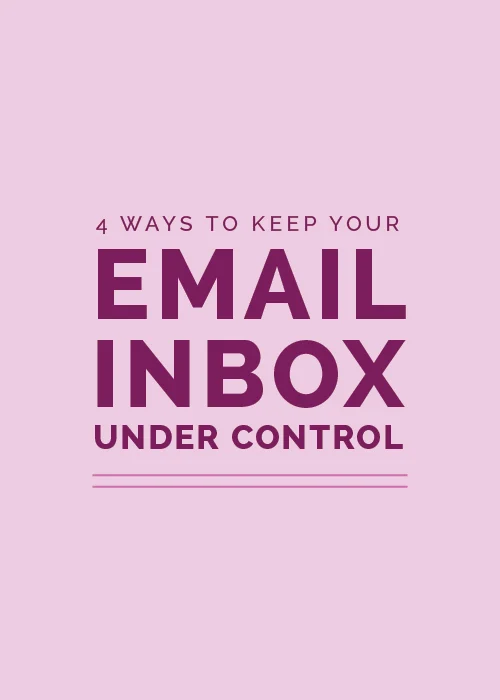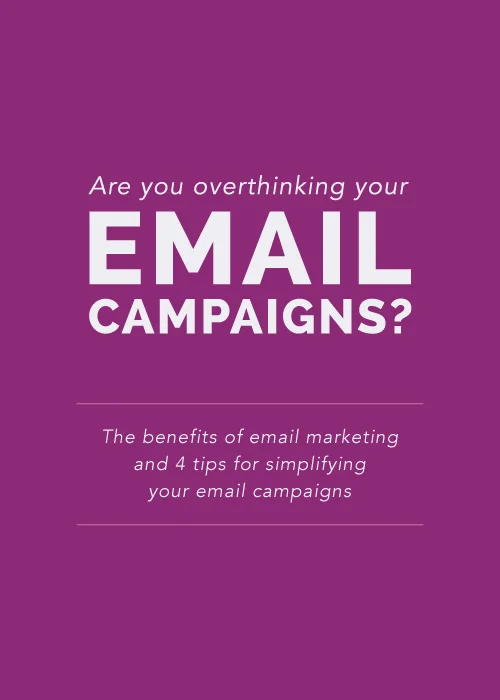Confession: I used to be extremely skeptical about mailing lists.
While their praises were being sung by countless online marketers, I couldn’t get on board with the hype; focusing on my mailing list seemed like one more task to add to my already full plate.
Despite my skepticism, I decided to bite the bullet earlier this year and devote more time and effort into building and nurturing my list.
And while I still have a lot to learn, I’ve been able to grow my list from 4,500 subscribers to over 11,000 subscribers in 3 months.
Over the next several weeks, I’m going to be sharing a transparent look at my plan for building a list, creating content, and increasing engagement. I’ll also go into detail on why I decided to switch platforms from MailChimp to ConvertKit.
But before I get into all of that, it’s important to understand the exclusive benefits that mailing lists offer, as opposed to blogging and social media.
My hope is that, like me, you’ll realize the fantastic potential your mailing list offers for keeping up with and appealing to potential customers.
1 | Direct access to potential customers
Not everyone who visits your blog is actively interested in your content.
Some people might land on your site after following a link on Facebook or a pin on Pinterest. Some might stumble upon it from a search engine. And others might check back occasionally from time to time to refer to a post they’ve found helpful.
The same is true for your social media accounts.
Your followers on Twitter might only be interested in the quotes and articles you share. Your followers on Instagram might only be following you to see your pretty photos.
But when people subscribe to your list, they’re showing an active interest in your business. They’re inviting you into their inbox because they want to follow along with you and receive your content.
And those who are actively interested in your content are more likely to be interested in your products and services. Every subscriber is a potential customer.
This is one area where email marketing trumps other outlets.
While blogging for business has innumerable benefits, people have to make a conscious decision to visit your website in order to keep up with your content. You have to rely on your audience to check back in regularly.
Related post: How to Successfully Blog for Business
Even if your readers follow along with you on Bloglovin’ or another feed reader, they have to actively check those sites to see your latest posts.
But every time you send an email, you’re putting your content right into the one feed your audience checks regularly: their email inbox.
A whopping 91% of consumers check their email at least once per day on their smartphone, making it the most used functionality (ExactTarget).
Email marketing gives you direct access to your potential customers through their inbox.
It also gives you a lot more control of when they see your content.
Unlike social media - where your posts can easily be missed by a large portion of your followers depending on the time of day you post - your audience isn’t likely to miss an email.
In fact, 70% of people say they always open emails from their favorite companies (ExactTarget).
When an email lands in someone’s inbox, they have the choice of reading it, ignoring it, or deleting it. They can’t not see it.
So if you’re having trouble reaching your audience and keeping them up to date on new launches and offerings, devote more time into growing and nurturing your mailing list. Having direct access to an interested audience of potential customers is an enormous benefit.
2 | Follow-up with your audience
As I mentioned a moment ago, many people who visit your website don’t often return.
According to our Google Analytics account, 64% of everyone who lands on this site is a new visitor and 36% are returning visitors.
If people aren’t returning on a regular basis, I miss out on an opportunity to familiarize visitors with my business and keep them interested.
However, if the people who land on my site end up subscribing to my list, I’m able to follow up with them and keep Elle & Company on their radar.
The same is true for your business. Take a look at your Google Analytics account and take a look at your New Visitors vs. Returning Visitors under Audience > Overview.
Related posts: Getting Started with Google Analytics and Setting Up Google Analytics in Squarespace
If you see that you aren’t getting a lot of returning visitors, consider placing opt-ins in prominent areas on your most visited pages (like your blog sidebar). Offer an appealing content upgrade to grab their attention and increase their interest in subscribing.
Then, all the people who were once a simple visitor on your website can turn into loyal subscribers and eventually, paying customers or clients.
3 | More insight into the interests of each individual follower
Whenever someone follows you on Instagram or adds your blog to their feed reader, do you ever wonder what drew their attention and encouraged them to follow along in the first place?
It’s often a guessing game trying to figure out why people find your business appealing.
You can visit http://pinterest.com/source/[yourURL] to see which posts they enjoyed most and wanted to share with others. You can track their engagement by taking a look at your most popular content in Google Analytics or your most popular posts on Twitter and Instagram. But you aren’t able to see and keep up with the exact interests of each individual member of your audience.
That’s, again, where a mailing list trumps blogging and social media.
Based on the email provider you use, you’re easily able to track how people opted into your list, the emails they open, and the links they click.
When people opt-in to any of the 4 options on the Elle & Company homepage, ConvertKit gives them a tag. Later, if I’m offering a webinar that revolves around branding, I might decide to send a special email to everyone who opted-in to my Design Your Brand option because I know that they’re already interested in that topic. I can simply choose that tag when I set up my email and I’m good to go.
Blogging doesn’t give me the option to segment my audience. Social media doesn’t give me the option to segment my audience.
But by setting up a mailing list and separating it into segments and groups, I’m able to keep up with the interests of my audience and send them content based on their interests.
This gives me a leg up when I go to create new content and offerings because I’m able to see exactly why people follow along with Elle & Company. It also gives me an advantage when I go to market those offerings because I know exactly who will be interested in it.
If you’re taking guesses as to why people follow along with you and what you should be offering, put some extra time into building and segmenting your list.
4 | Potential for greater engagement
One of the biggest reasons for people’s skepticism of focusing on a mailing lists is the inability to see their effectiveness beforehand. Unlike blogging and social media, you can’t see the amount of engagement other business owners are getting from their lists.
On Instagram or Twitter, it’s easy to see how many people are following along with a business and how much engagement their getting, simply by looking at their account. “30,000 followers and over 1,000 likes on every post? That business must be doing alright.”
Related post: The Glaring Issue with Using Social Media for Business
Blogging is a little less transparent; you can’t see the total number of people who are following along but you can see some engagement through the comments.
Mailing lists, however, are opaque. The numbers aren’t public knowledge; you aren’t able to see how many people are following along or engaging with another business’s content. You can’t see how many people subscribe to the list or reply to an email unless you’re behind the list.
Which is why statistics like these are often shocking:
- Email conversion rates are three times higher than social media, with a 17% higher value in the conversion (McKinsey & Company)
- Email is nearly 40 times better than Facebook and Twitter at acquiring customers. (McKinsey & Company)
- Email marketing yields an average 4,300% return on investment for businesses in the United States (Direct Marketing Association)
- For every $1 spent on email marketing, the average return on investment is $44.25 (EmailExpert)
- Marketers consistently ranked email as the single most effective tactic for awareness, acquisition, conversion, and retention (Gigaom Research)
Don’t let the fact that you can’t see the success of other people’s lists deter you from believing that email marketing isn’t effective. The numbers don’t lie.
So I encourage you, if you’re on the fence about putting time and energy into developing and nurturing your list, give it a shot.
Follow along over the next several Wednesdays as I continue to share more insights on how to build your list, create content, increase engagement, and set everything up in ConvertKit.
And if you’re interested in gaining a firsthand look at how I approach my list, you can subscribe right here:
Are you skeptical about devoting more time into your list? For those of you who currently put time and effort into your list, what are the biggest benefits you’ve seen from email marketing?




